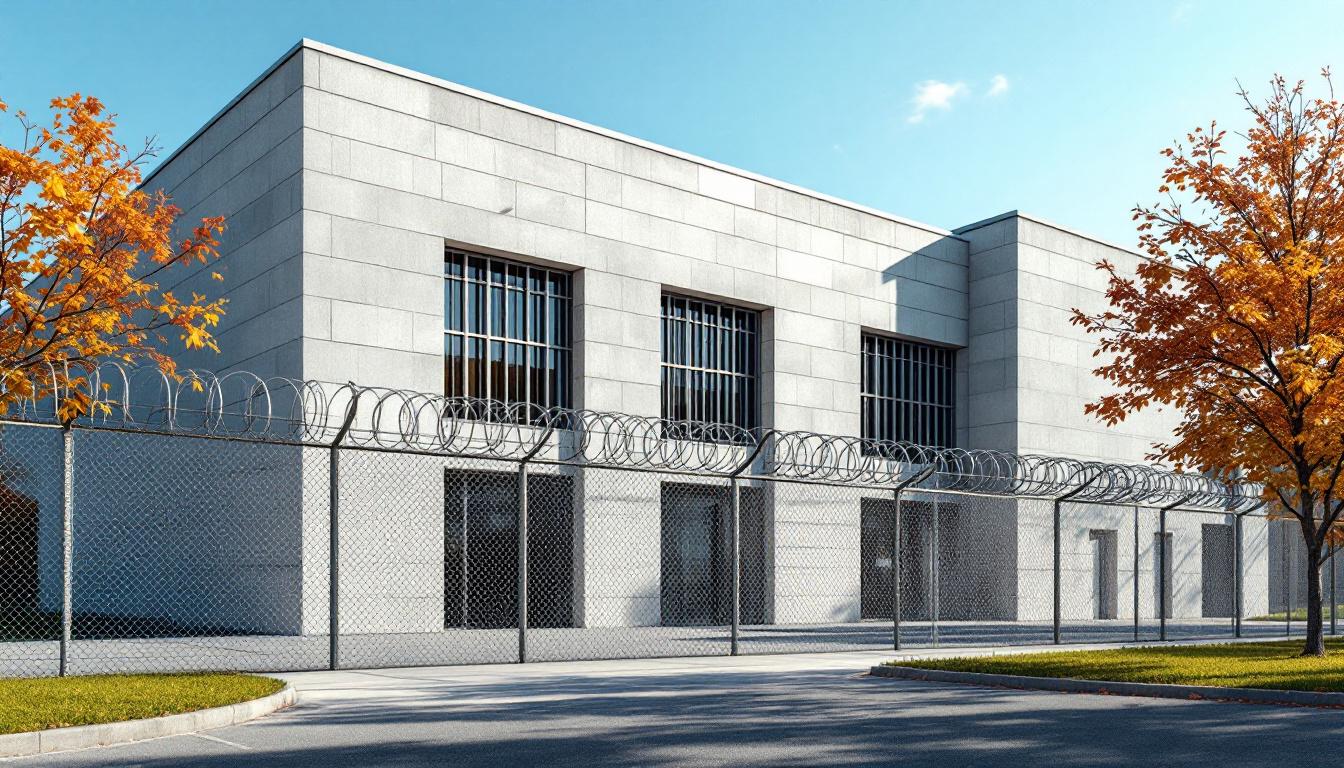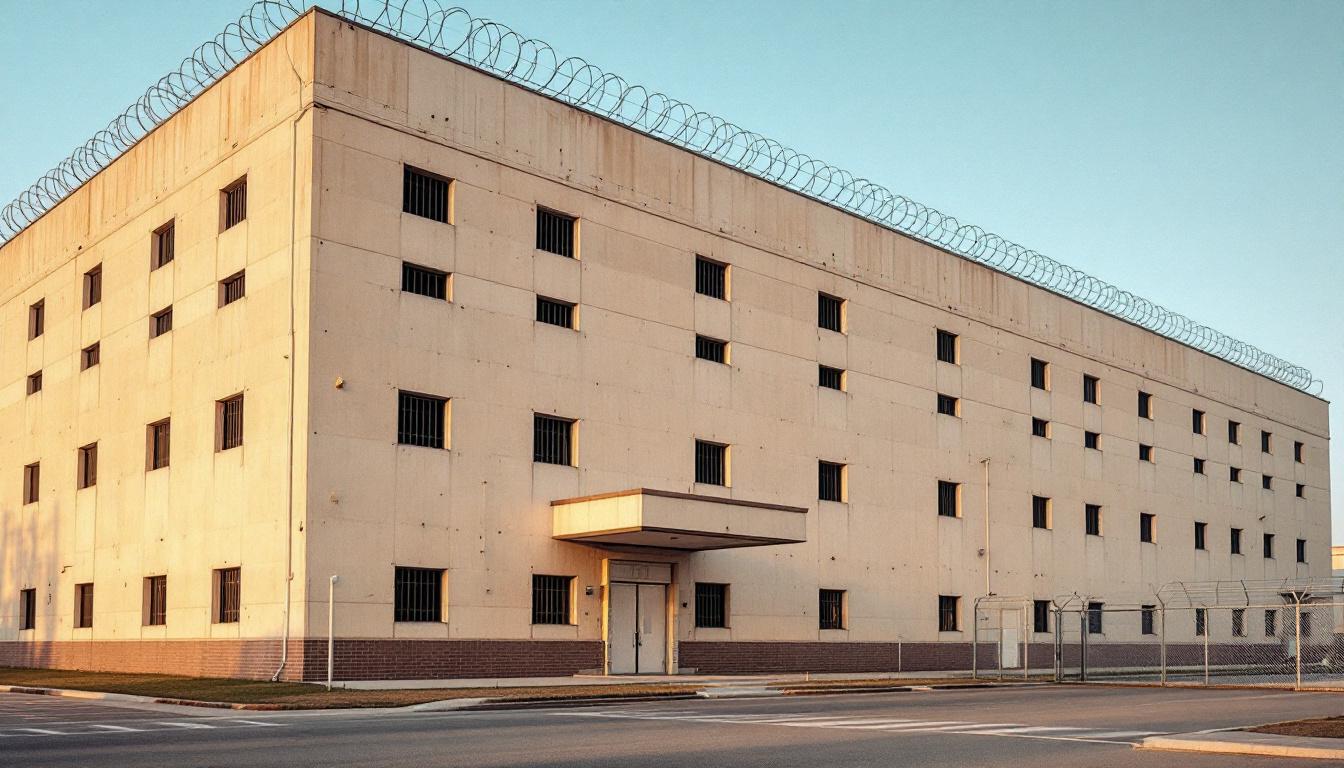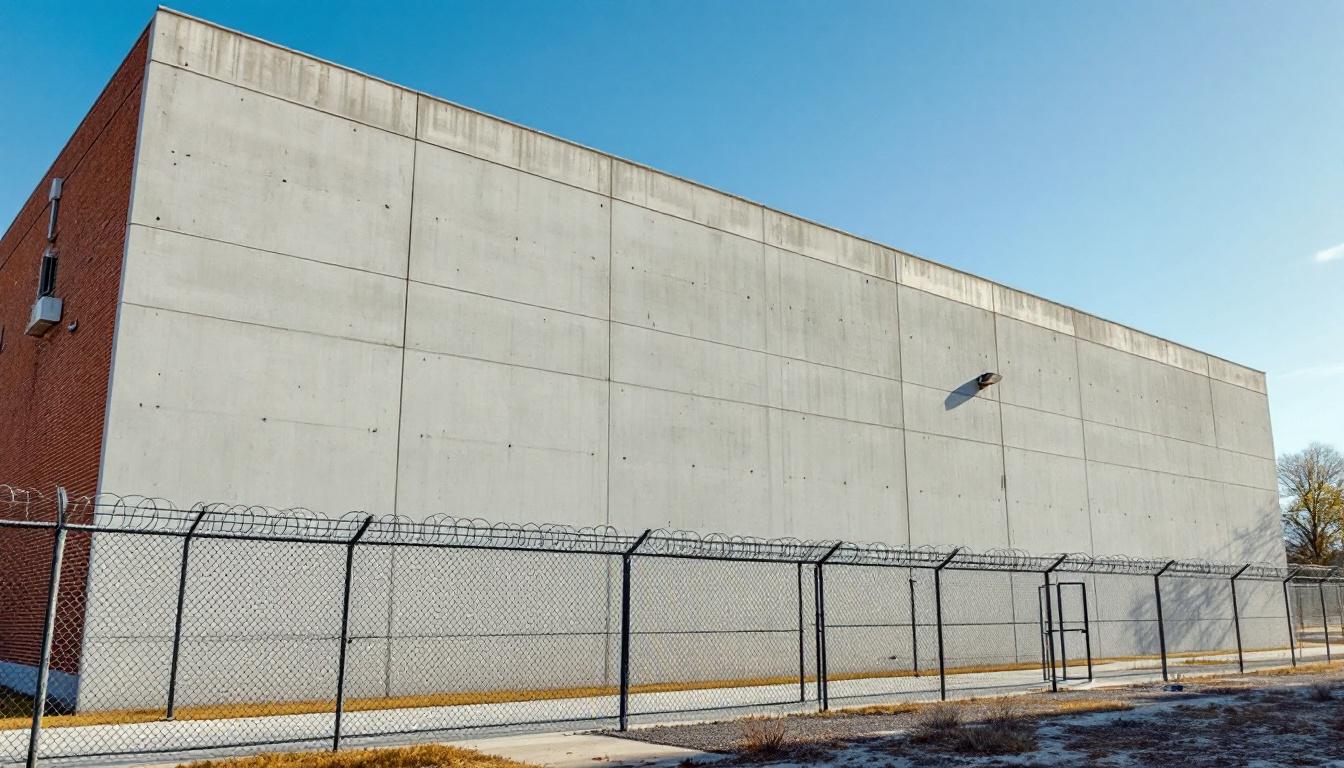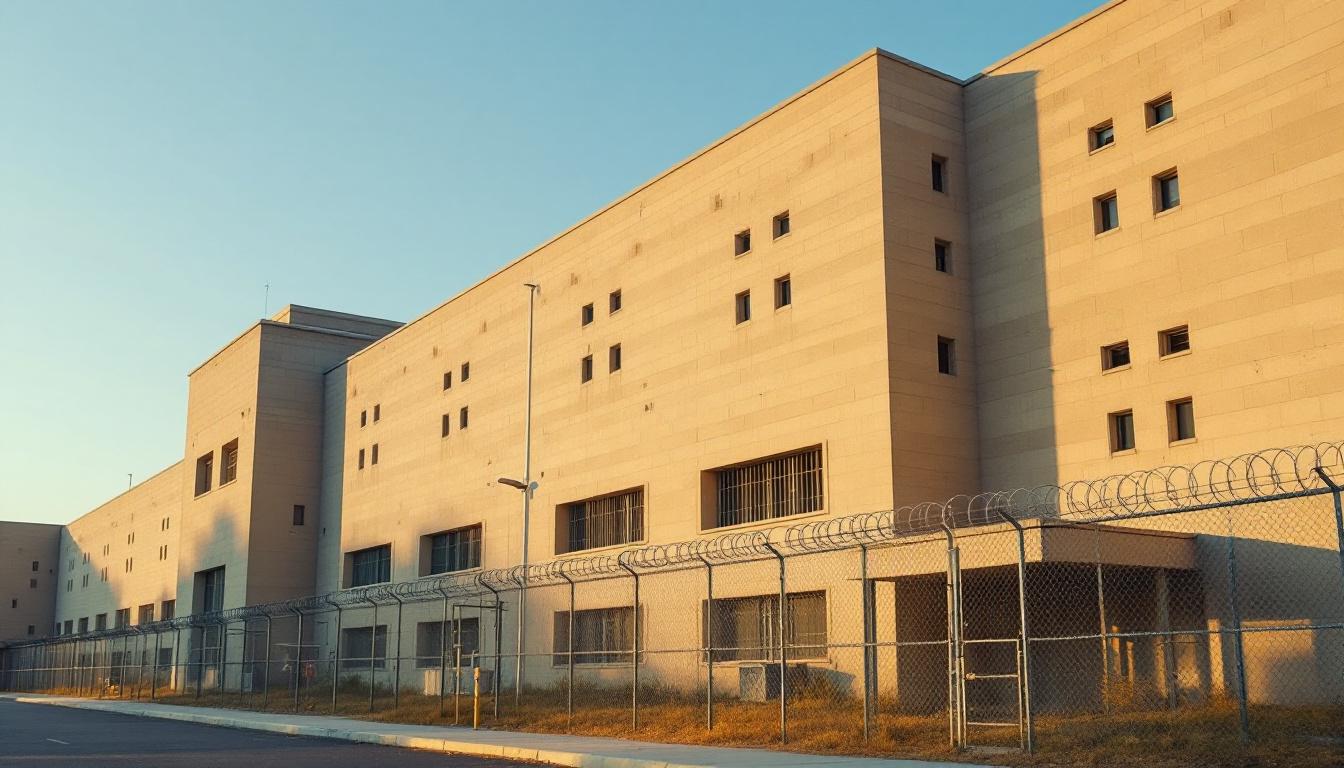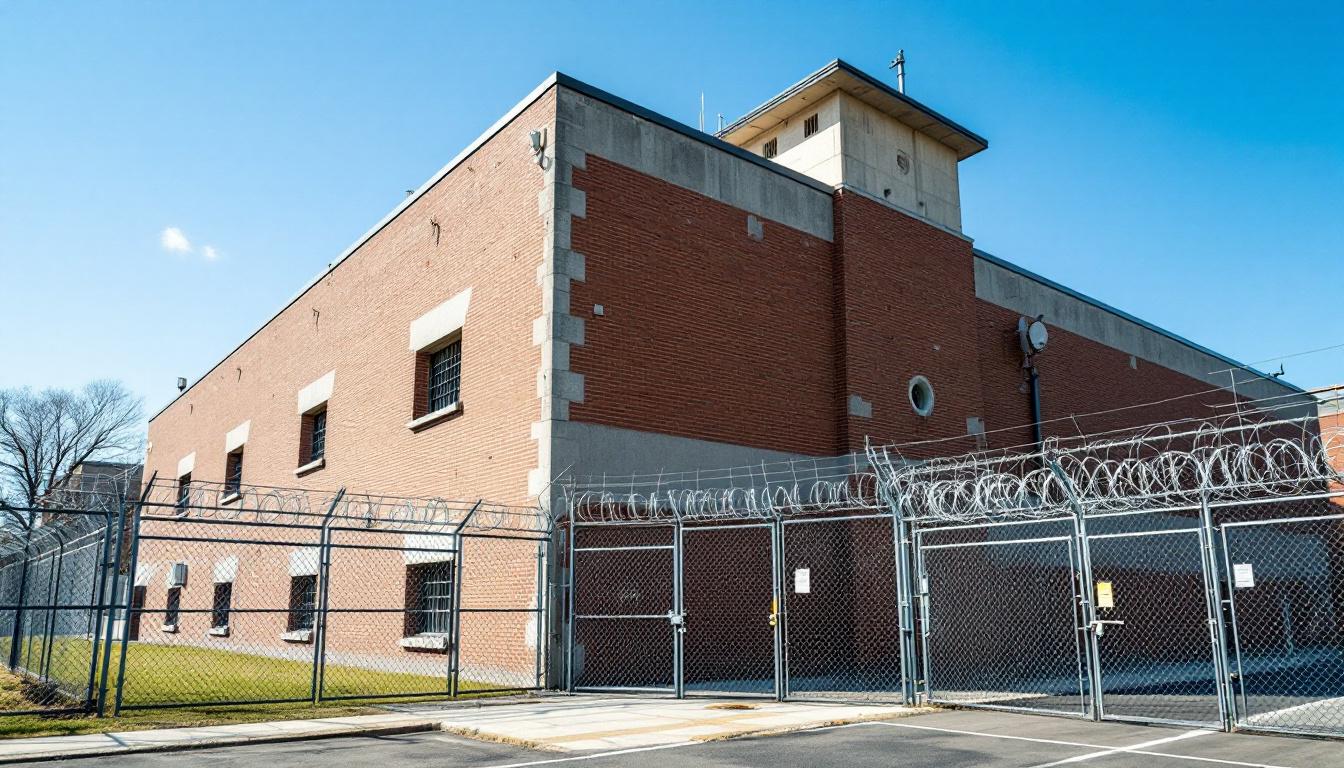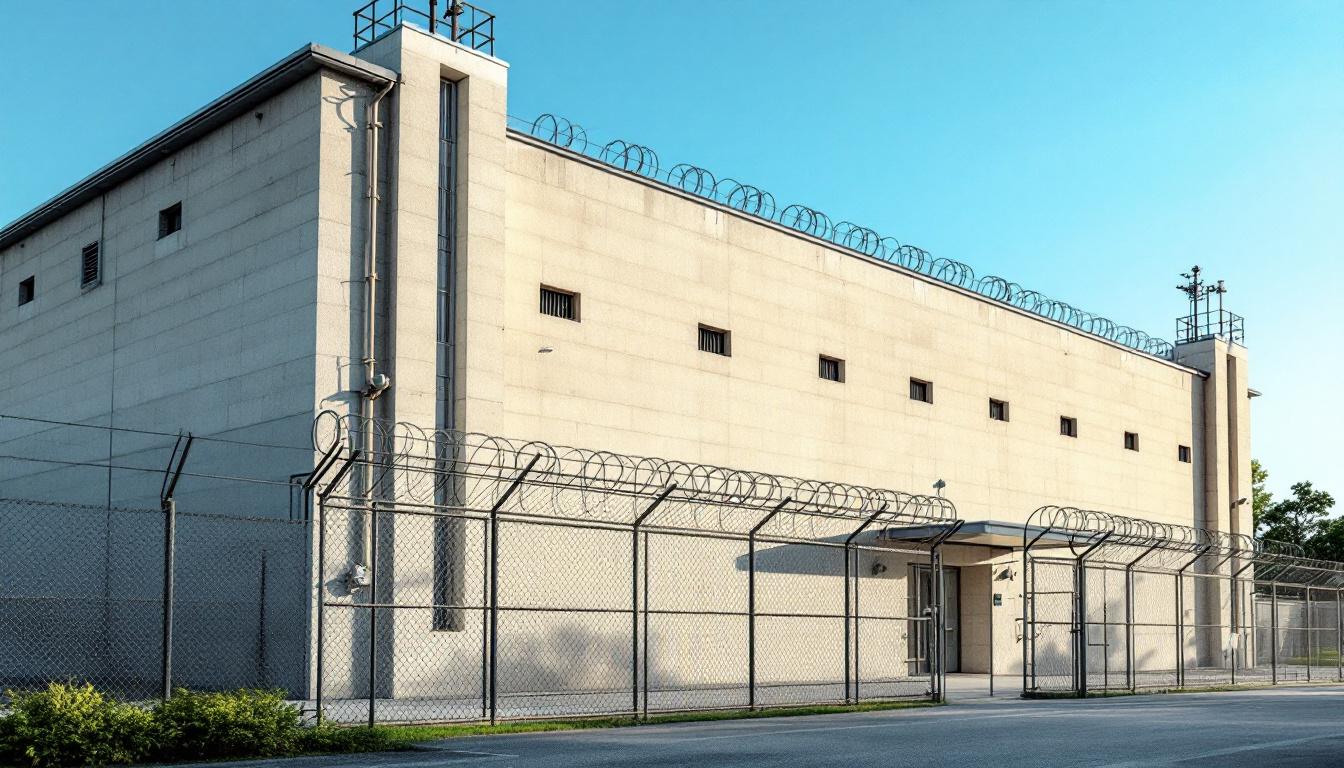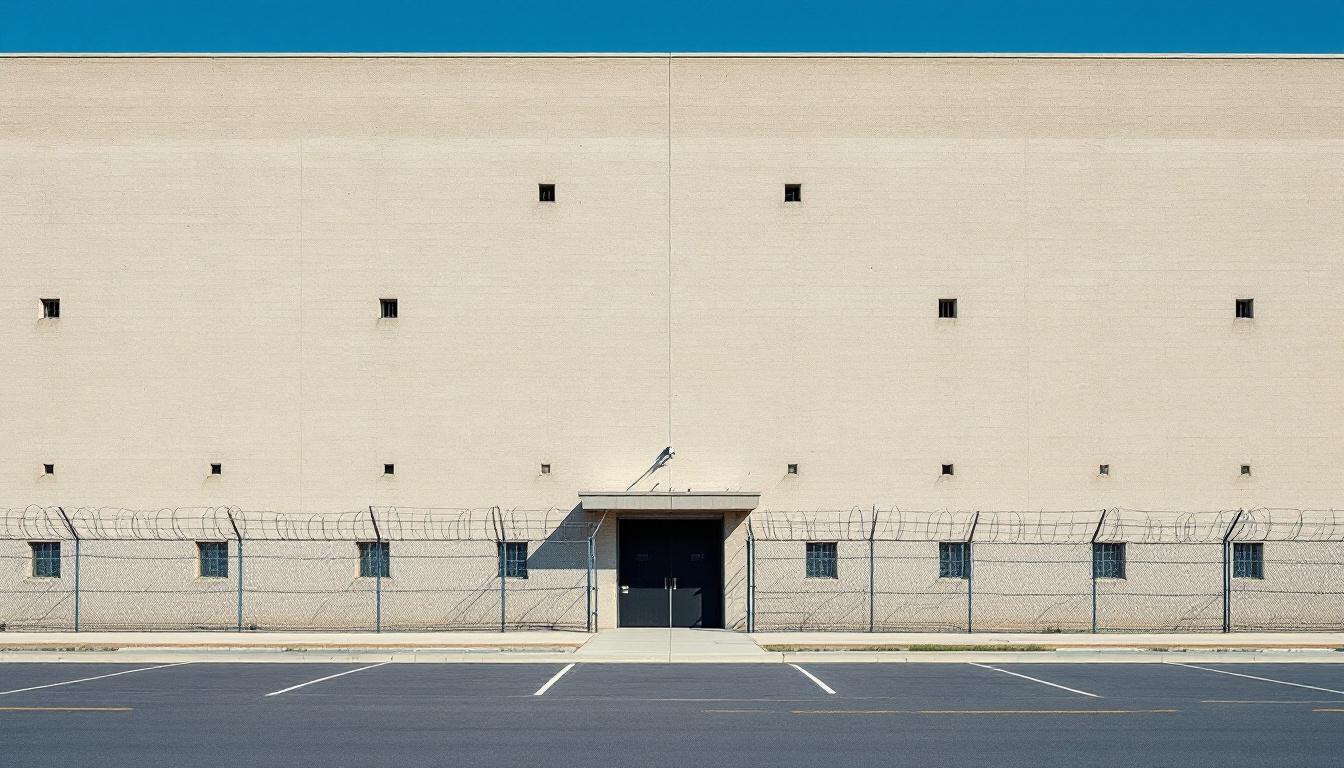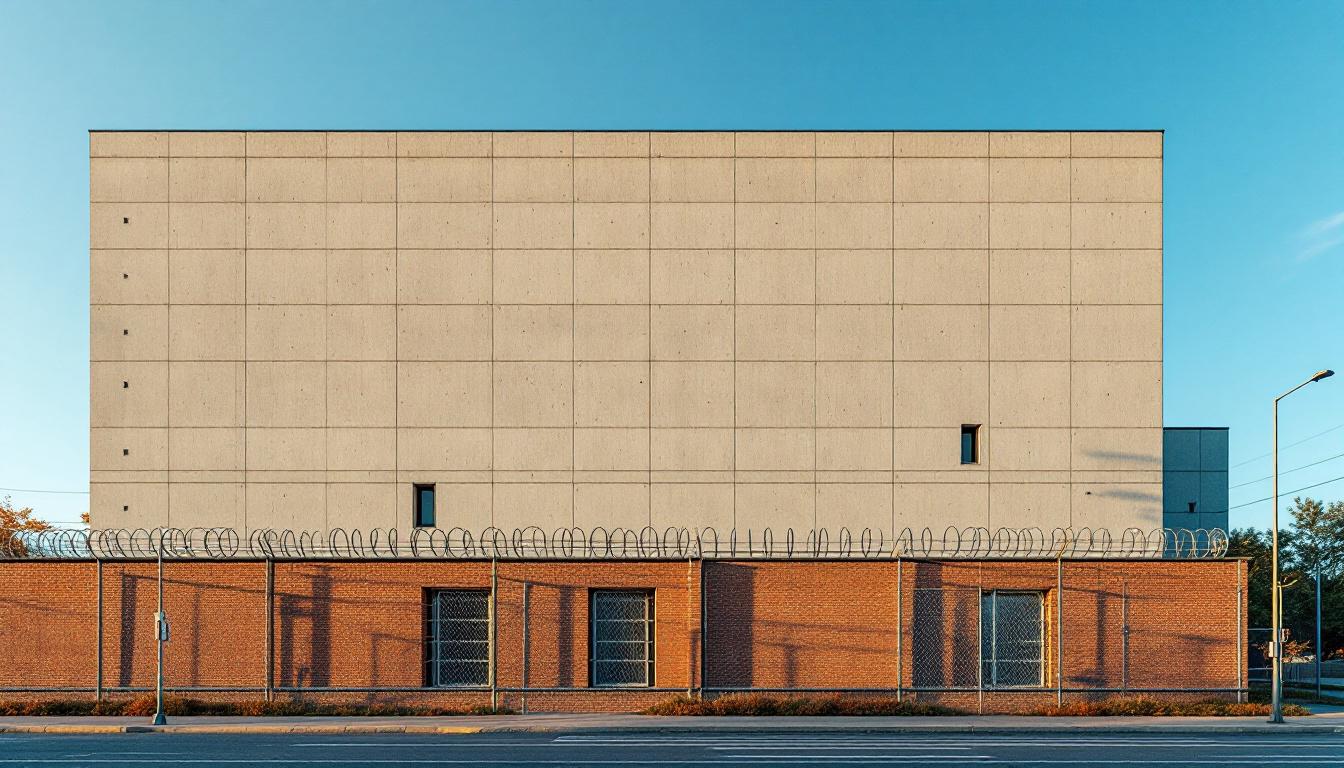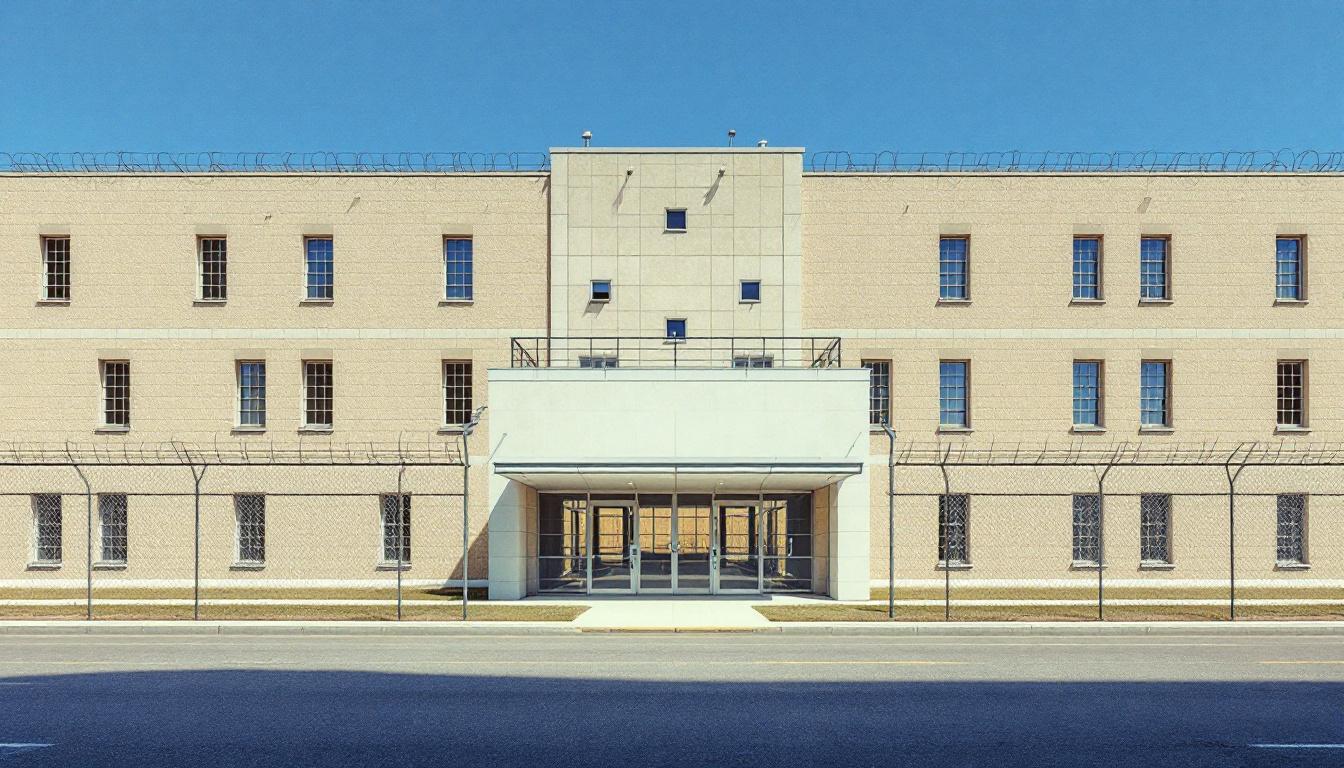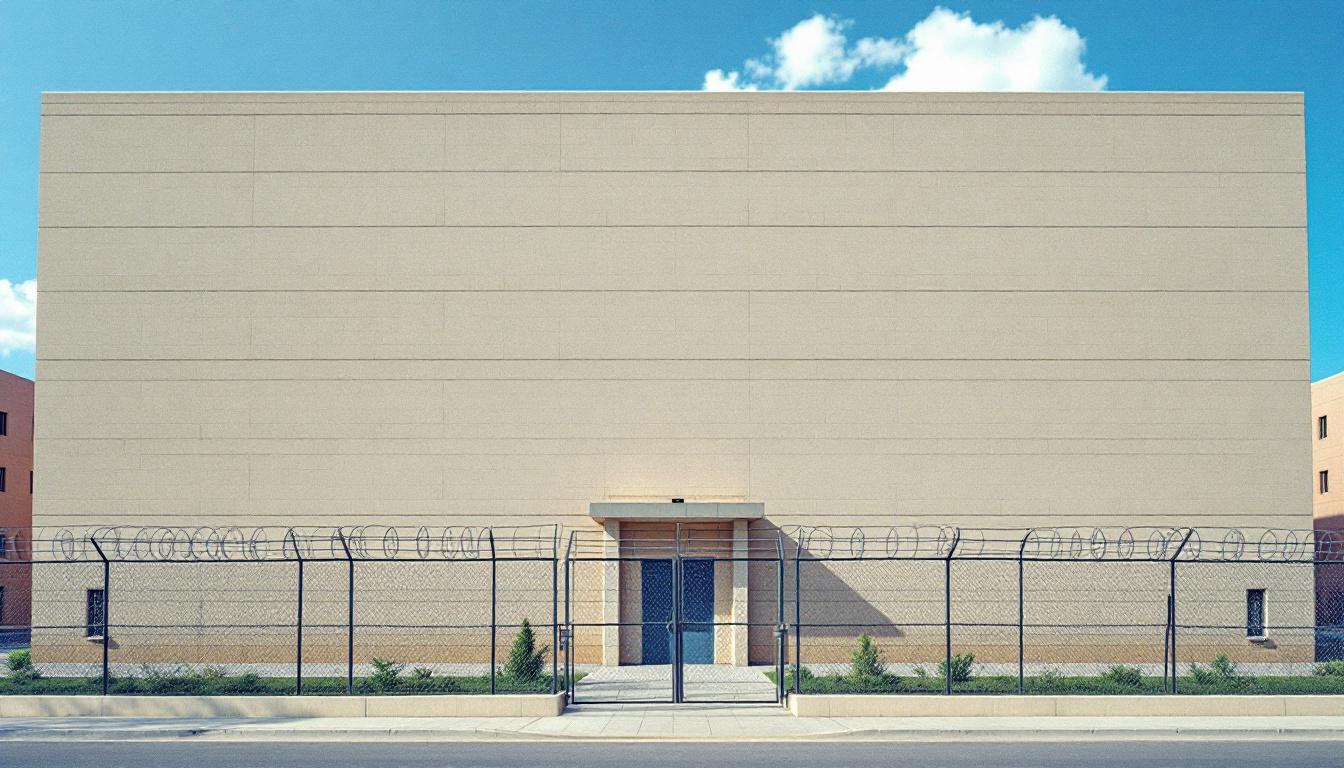
Quick Navigation
How to contact an inmate at Baker Re Entry Center
This comprehensive guide will walk you through how to connect with an inmate at Baker Re Entry Center. Follow the steps below to find an inmate and send letters and photos:
- Search for the inmate using our search tool below
- Create your account or log in to Penmate
- Write your message (up to 6,000 characters)
- Send instantly - inmates receive printed copies daily
Find an Inmate
Search for an inmate to start communicating today
Tip: You can search by first name, last name, or inmate ID number
To contact a person at Baker Re Entry Center start by searching for the person on the official facility website. Perform a search by following these steps:
- Step 1: Enter their first name and last name into the search form and click "Search"
- Step 2: Locate their inmate record
- Step 3: Write down their Inmate ID and any housing information provided
Important! Be sure to enter the person's full name. Nicknames should not be used.
How to Send Messages to Inmates

You can use your phone or computer to send emails, letters, and photos to an inmate. Messages are sent electronically to inmate tablets or kiosks at the facility. If you would like to send a message, start by searching for an inmate at Baker Re Entry Center.
Sending Photos and Postcards

A great way to send love and support to a loved one at Baker Re Entry Center is to send photos and postcards. It only takes a few minutes to send photos from your phone and it makes a huge difference. You can also mail postcards with words of support and inspiration, or design your own postcard for special moments like birthdays and holidays.
Important! Be sure not to send any explicit photos or they may not be approved by the facility. You can also use a photo printing app like Penmate to make sure your photos are printed at the correct size (4x6 or 3x5) and are mailed according to the rules and regulations of Baker Re Entry Center.
Frequently asked questions about Baker Re Entry Center
-
How long does it take to deliver a message?
If you're sending an email message your letter is usually delivered within 24-48 hours. For messages sent via mail you should expect delivery within 3-7 days. All messages will need be approved by Baker Re Entry Center.
-
How much does it cost to send a message to Baker Re Entry Center?
You can send a message free using your phone or mail a message via USPS for the price of a $0.60 stamp and envelope. You can also purchase credits or e-stamps from services starting at $1.99.
-
What services can I use to contact an inmate at Baker Re Entry Center?
Penmate
You can use Penmate to send letters and photos to an inmate from your phone. It's an easy way to stay in touch during your loved one's incarceration. Use the inmate locator to find an inmate's location and contact information, then you can send messages within a few minutes.
Securus messaging
Securus may be another option for communicating with an inmate at Baker Re Entry Center. You can create a friends and family account and purchase credits to send messages. All messages will be reviewed and must be approved by the facility.
JPay
Some county jails and state prisons may support sending messages with JPay. You must register an account with the system, find your loved one, and purchase stamps to send messages. For some locations you can also attach photos.
Smart Jail Mail
You may also check if Smart Jail Mail is available at Baker Re Entry Center. Smart Jail Mail is operated by Smart Communications and has contracted with some state and county jails. After purchasing credits, your messages and photos are sent to the facility, printed out, and then handed out to your loved one.
-
What is the mailing address of Baker Re Entry Center?
Mailing address:
Baker Re Entry Center
17128 US-90
Sanderson, FL 32087
Business hours:
- Monday: 10:00 – 10:45 PM
- Tuesday: 10:00 – 10:45 PM
- Wednesday: 10:00 – 10:45 PM
- Thursday: 10:00 – 10:45 PM
- Friday: 10:00 – 10:45 PM
- Saturday: 10:00 – 10:45 PM
- Sunday: Closed
-
What are the visiting hours at Baker Re Entry Center?
Visiting hours at Baker Re Entry Center vary by housing unit and security level. Generally, visits are scheduled on weekends and holidays, with some facilities offering weekday visits. Contact the facility directly for the current visiting schedule. Visits typically last 30-60 minutes and must be scheduled in advance.
-
What items are prohibited when sending mail to Baker Re Entry Center?
Prohibited items typically include: cash, personal checks, stamps, stickers, glitter, glue, tape, staples, paperclips, polaroid photos, musical or blank greeting cards, hardcover books, magazines with staples, and any items containing metal or electronics. Only send letters on plain white paper with blue or black ink. Photos must be printed on regular photo paper (no Polaroids). Always check with Baker Re Entry Center for their specific mail policies.
-
How do I send money to an inmate at Baker Re Entry Center?
You can send money to an inmate at Baker Re Entry Center through several methods: 1) Online using JPay, Access Corrections, or the facility's approved vendor, 2) Money orders mailed directly to the facility with the inmate's name and ID number, 3) Kiosks located in the facility lobby, or 4) Over the phone using a credit or debit card. Fees vary by method, typically ranging from $2.95 to $11.95 per transaction.
-
Can I schedule a video visit with an inmate at Baker Re Entry Center?
Many facilities now offer video visitation as an alternative to in-person visits. At Baker Re Entry Center, video visits may be available through services like Penmate, Securus Video Connect, GTL, or ICSolutions. Video visits typically cost $10-20 for 20-30 minutes and must be scheduled in advance. You'll need a computer or smartphone with a camera and reliable internet connection. Contact the facility for their specific video visitation policies and approved vendors.
-
What identification do I need to visit an inmate at Baker Re Entry Center?
All visitors must present valid government-issued photo identification such as a driver's license, state ID, passport, or military ID. Minors must be accompanied by a parent or legal guardian who can provide the minor's birth certificate. Some facilities require visitors to be on the inmate's approved visitation list, which may require a background check. Contact Baker Re Entry Center for specific ID requirements and visitor approval procedures.
-
How can I find out an inmate's release date?
To find an inmate's release date at Baker Re Entry Center, you can: 1) Use the online inmate search tool if available, 2) Call the facility's records department, 3) Contact the inmate's case manager or counselor, or 4) Have the inmate provide this information during a call or visit. For privacy reasons, some facilities only release this information to immediate family members.
Facility Overview
Contact Information
Baker Re Entry Center17128 US-90
Sanderson, FL 32087
Official Website

About Baker Re Entry Center
Re-entry facilities within Florida's correctional system serve as crucial transitional environments where individuals prepare for successful community reintegration, and Baker Re-entry Center, FL exemplifies this mission through its comprehensive approach to rehabilitation and preparation. Located in Tampa, this FL correctional facility operates within the broader framework of the state's commitment to reducing recidivism while supporting both offenders and their families during the critical transition period. The facility typically focuses on bridging the gap between incarceration and community life, offering structured programming designed to address the multifaceted challenges individuals face when preparing to rejoin society.
Programming at Baker Re-entry Center generally emphasizes practical life skills development alongside therapeutic interventions that support behavioral change and personal growth. The population services may include vocational training opportunities, educational programming, substance abuse counseling, and mental health support, all tailored to meet individual needs and circumstances. Tampa's urban environment provides a relevant backdrop for reintegration preparation, as residents often work toward developing the skills necessary to navigate employment opportunities, housing arrangements, and family reunification within similar community settings.
The facility's role within Florida's correctional framework typically involves close coordination with community partners, parole officers, and support services to ensure continuity of care upon release. This collaborative approach often extends to family involvement programs, recognizing that successful reintegration frequently depends on strengthened family relationships and community connections. Through its comprehensive programming model, the center generally works to address the underlying factors that contribute to criminal behavior while building the foundation for productive citizenship and long-term community success.
Programs & Services
Through comprehensive programming designed to address the multifaceted challenges of reintegration, supportive services at Baker Re-entry Center create pathways for meaningful transformation and community reconnection. The facility's approach recognizes that successful reentry requires more than basic preparation—it demands a holistic framework that addresses educational deficits, develops marketable skills, and provides therapeutic intervention where needed. This philosophy of comprehensive support permeates every aspect of programming, ensuring that the population receives coordinated services that build upon one another to create sustainable foundations for post-release success.
Educational programs serve as cornerstones of personal development, offering opportunities for the population to advance their academic credentials and enhance their prospects for meaningful employment upon release. These initiatives typically include basic literacy instruction, GED preparation, and continuing education opportunities that may extend beyond fundamental requirements. Additionally, vocational training in small engine repair provides hands-on technical skills that translate directly into employment opportunities within Florida's service and maintenance sectors, where such specialized knowledge remains consistently in demand.
Support services encompass both structured programming and therapeutic interventions that address the complex needs of individuals preparing for community reintegration. Work release programs often provide supervised employment opportunities that allow participants to develop professional relationships while contributing to their financial stability and family support obligations. The facility may also offer recycling programs that combine environmental stewardship with skill development, while conflict resolution training equips the population with essential interpersonal tools for navigating workplace and personal relationships. Substance abuse treatment programs typically integrate evidence-based therapeutic approaches, recognizing that addressing underlying addiction issues remains fundamental to preventing recidivism and supporting long-term community success.
Daily Life & Visitation
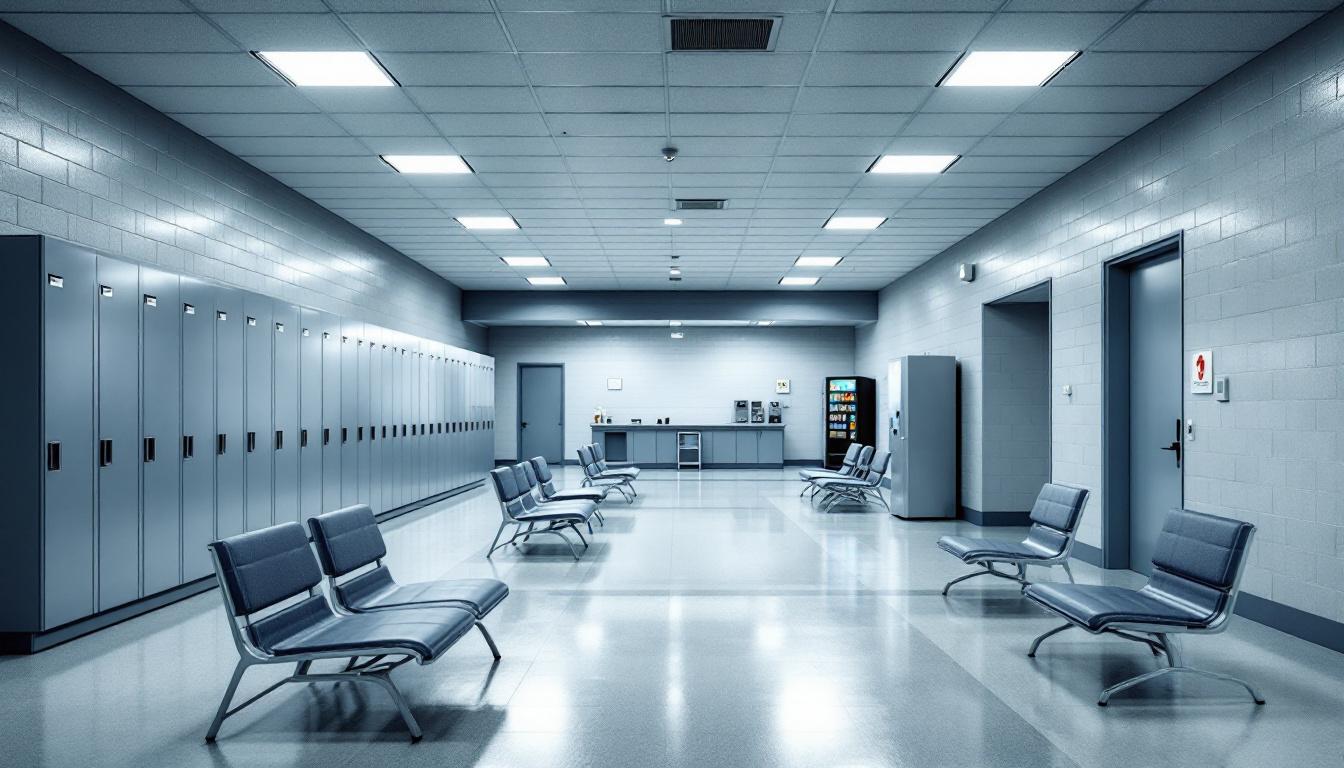
The carefully orchestrated organizational framework at Baker Re-entry Center establishes a rhythm that currently guides every aspect of the population's daily experience, with structured schedules that continue to emphasize preparation for community reintegration. Residents typically begin their days with designated wake-up times followed by personal hygiene routines, count procedures, and organized meal service in the facility's dining areas. The institutional schedule generally includes work assignments, educational programming, and structured activities that supply both routine and purpose, while security protocols maintain order throughout the facility's operations.
Living accommodations at the facility typically consist of dormitory-style housing units where residents are assigned beds and limited personal storage space for approved belongings. The population generally shares common areas within their housing units, including dayrooms equipped with television and basic recreational amenities, while bathroom facilities and shower areas operate on scheduled rotations to accommodate all residents. Additionally, the facility usually maintains commissary services where residents may purchase approved personal items, snacks, and hygiene products using funds from their institutional accounts, which are often supplied through family deposits or earnings from work assignments.
While daily life centers around structured programming schedules that may include vocational training, substance abuse counseling, and life skills workshops, the facility also typically provides recreational opportunities such as outdoor exercise periods, organized sports activities, and access to library services. Visitation policies generally allow family members and approved visitors to maintain contact during designated hours and days, often supplemented by telephone privileges and correspondence options that help preserve important family connections. The population usually has access to various work assignments within the facility, which may include food service, maintenance duties, laundry operations, or administrative support roles that provide both structure and the opportunity to develop job skills relevant to their eventual community reintegration.
Ready to Connect?
Start communicating with your loved one today
Search for an Inmate
